There are two notable nuclear reactions that can be used to generate power:
- Nuclear fusion is based on the idea of forcing atomic nuclei together to generate energy. It’s the same atomic reaction that happens inside the Sun.
- Nuclear fission, on the other hand, splits unstable atoms. In the process, it produces radioactive waste. It is this technology which is used in all existing nuclear plants.
However, nuclear fusion for energy production involves only very small amounts of short-lived radioactivity. Instead of splitting atoms, a fusion reactor would melt them together by collision. If it can be commercially viable, it is a much safer process.
Also, a fusion power plant (or ‘thermonuclear reactor’) can potentially keep itself going infinitely, generating many times more energy than it consumes. Thus, it may be possible to produce an endless supply of clean energy with virtually no radioactive waste.
In this article we look at where nuclear technology is currently heading. We explore the alternatives, and whether nuclear fusion will become a viable form of renewable energy over the next few decades.
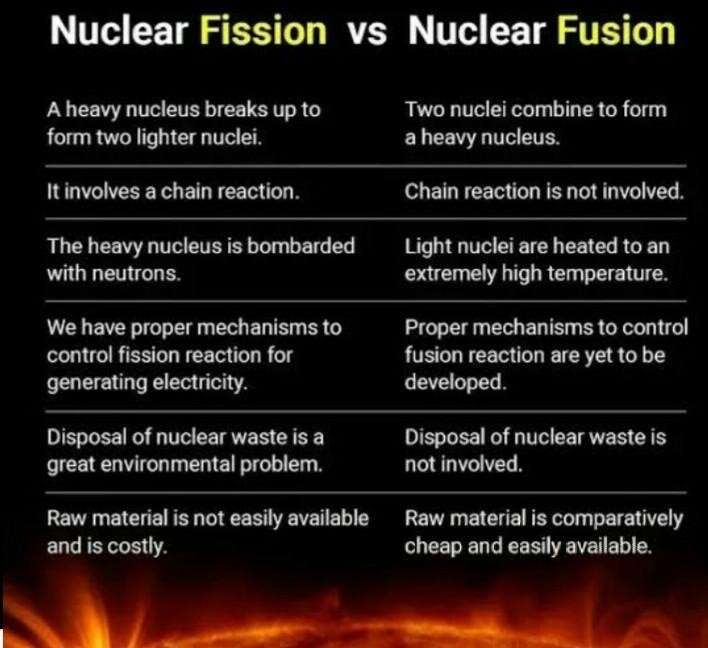
What is Nuclear Fission?
The bonds that exist within atoms create enormous amounts of energy when they are split apart. The basic principle of traditional nuclear power is a reaction (fission) that breaks apart the protons and neutrons (the nucleus) inside atoms. This energy can be converted into power.
Most existing nuclear plants use Uranium atoms. Neutrons are fired at the atoms which cause them to split apart, releasing heat and radiation.
Then, the neutrons from the Uranium atoms canon into other atoms, producing a chain reaction. A nuclear power plant manages this chain reaction to create the required output of heat.
Whilst nuclear power is a renewable energy source, Uranium is non-renewable. U-235 is the relatively rare variant of Uranium used in nuclear power production.
Therefore, there is a considerable amount of extraction and processing before it can be used in a fission reactor.
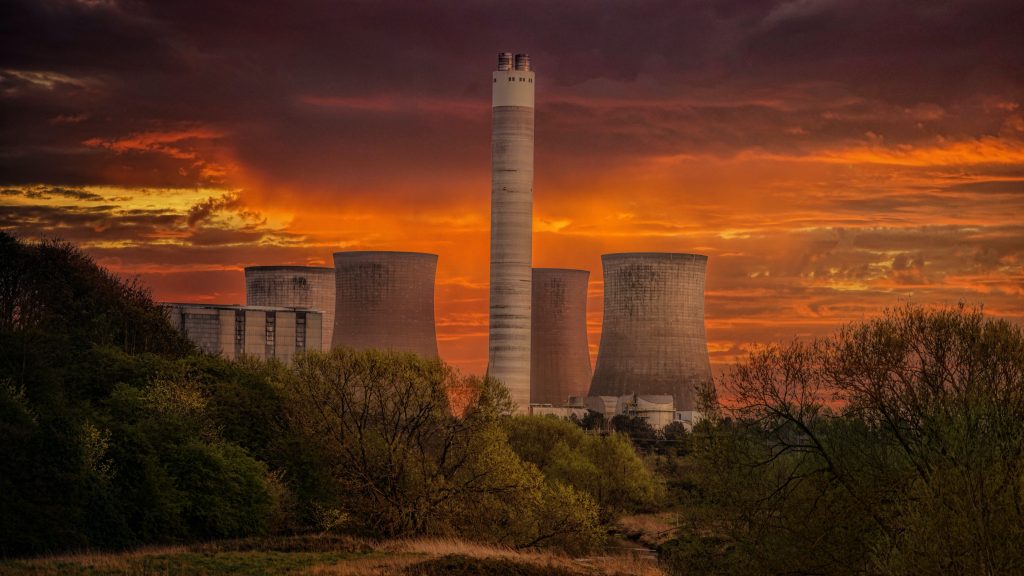
Unfortunately, Uranium is a radioactive material that pollutes air, soil, and water for a long time. Even though it is a fairly common metal, mining for Uranium creates long-lasting radioactive waste.
The State of Nuclear Power: China and the USA
Nuclear power generation is considered a clean process and therefore a renewable source of energy. The challenge with nuclear fission is the care and disposal of its radioactive waste.
According to the International Energy Outlook 2016, world electricity generation from nuclear power stood at 2.3 trillion kWh in 2012, and is estimated to reach 4.5 trillion kWh in 2040.
After 2000, China’s nuclear power industry entered a moderate development stage. Under the guidance of the government. The power plants Zhejiang Qinshan Phase II, Guangdong Lingao Phase I, and Qinshan Phase III were constructed, one after another.
From 2006 to 2011, China’s nuclear power industry entered an active development
stage. The first two stages are the rapid rise and development of the nuclear power industry before the Fukushima disaster.
However, since the 2011 Fukushima leak in Japan, China’s nuclear energy development has stalled. Most Chinese nuclear energy plants are built in coastal areas, and the nuclear power plants in Fujian, Guangdong, and Hainan are denser.
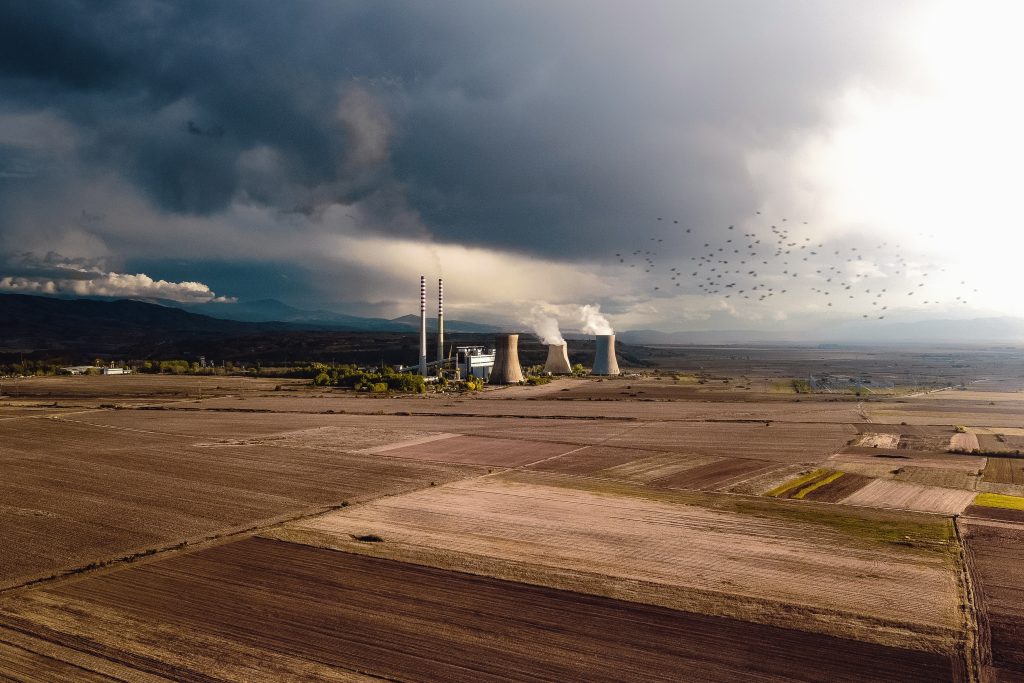
In the USA, all operational nuclear power plants are expected to be decommissioned by 2050.
Simply swapping old for new would require construction starting every six months for the next 40 years. As it stands, there are four new reactors under construction in the US, and applications for another 16.
Thus, the US Department of Energy, the NRC, and private industry are now assessing whether their first-generation plants could continue to operate for another 20 years.
This would extend the lifespan of those reactors to 80 years.
Modern Nuclear Power Plants: SMRs and Micro-Nuclear
Small, modular fission reactors (SMRs) are the latest design and a fraction of the size of a conventional nuclear power plant.
Given their smaller size, they can be prefabricated and installed on sites unsuitable for larger operations.
The other advantage of SMRs is that they can provide low carbon power to remote areas, both on and off the energy grid.
SMRs provide approximately a third of the power of a conventional nuclear plant. That’s up to 300MW(e) per unit. An even smaller unit, called a ‘Microreactor‘ power plant can provide about 10MW(e).
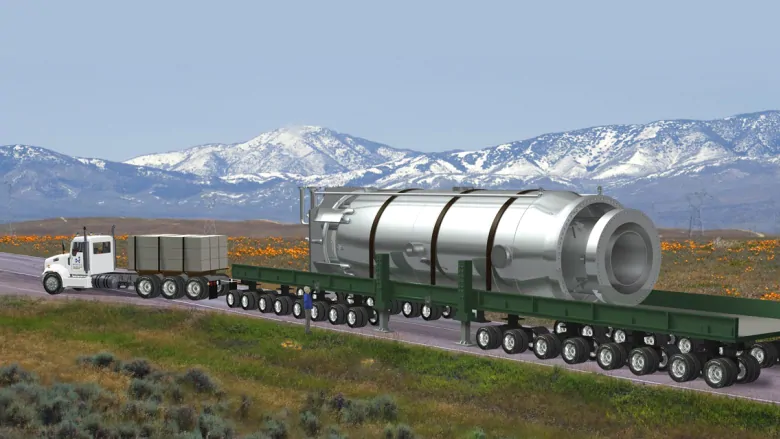
In terms of geography, the market for micro-nuclear reactors is in North America, Latin America, Europe, Asia Pacific, the Middle East, and Africa.
Rapid economic growth in the Asia Pacific region will drive demand for this technology into the future. Still, North America and Europe accounts for a large share of the global micro-nuclear reactor market. It is led by private industry and government-funded nuclear projects.
Are Small Modular Reactors Safe?
SMRs are nuclear fission reactors of smaller size and simpler construction. They operate at a lower level of power and require less human intervention. Safety features rely on ‘passive’ operation.
This means they use natural conditions like gravity and natural circulation to automatically shut down in the event of an accident (a design that would have averted the Fukushima disaster).
They also last much longer. Replacing the fuel only needs to occur every 3-7 years. Some SMR’s will even last up to 30 years without refuelling.
Whilst it takes around 9.4 years to build a conventional nuclear power station, an SMR takes just 3-5 years. By comparison, it takes 1-3 years to build a major wind or solar project.
Even though a fission reactor’s operation produces zero emissions, every other aspect of its life cycle creates dangerous pollution. This is at a much lower level in an SMR. Nevertheless, there are still environmental risks.
This includes the mining of uranium, construction, decommissioning, and disposal of hazardous waste. Conventional sized plants also use enormous amounts of water over the course of their operation.
A Major Development in Nuclear Fusion for Energy
Recently, European scientists say they have made a major breakthrough in the development of nuclear fusion for energy – the same energy process that powers the stars.
Some of the largest countries in the world have joined forces to build the ITER (International Thermonuclear Experimental Reactor). The ITER is set in the hills of Provence, Southern France. It build to show the technology can release ten times more energy than it consumes.
In addition, the UK’s JET laboratory has recently smashed its own world record for the amount of energy it can extract when ‘squeezing together’ two forms of hydrogen.
Laboratory experiments inside the JET have produced some 59 megajoules of energy over five seconds (some 11 megawatts of power). Whilst this is only a very small ’proof of concept’, the results are encouraging.
Consequently, researchers are optimistic that large-scale nuclear fusion holds enormous potential. If it is viable, the technology could one day provide unlimited amounts of very low-carbon, low-radiation energy.
How Does Nuclear Fusion Work?

Once again, Nuclear Fusion works on the principle that energy that can release by forcing together atomic nuclei rather than by splitting them apart.
In the core of the Sun, huge gravitational pressures allow this to happen at temperatures of around 10 million degrees Celsius.
At the much lower pressures that are possible on Earth, temperatures need to be much higher, above 100 million degrees Celsius.
Under these enormous pressures and temperatures, two or more atomic nuclei are able to overcome the charge’s barrier.
This process is basically ‘quantum tunneling effect’. Here, atoms join together to create a heavier nucleus, and release enormous amounts of energy in the process.
the Challenges of Nuclear fusion energy
Temperature is one of the key challenges of fusion energy.
The massive heat needed to create an ionized gas, or plasma, is hard to reproduce on Earth. Also, that temperature will vary depending on the type of fusion being created.
One of the most popular reactions in the design of first generation fusion labs, is deuterium-tritium (DT) fusion.
DT fusion requires the lowest temperatures to make a significant amount of power.
Even so, the plasma temperatures at the core of a DT fusion reactor would be extraordinary, between 150 to 200 million degrees. That means producing temperatures on Earth that are many times hotter than the centre of the Sun.
Nuclear Fission vs Renewable Energy Solutions
The world must decarbonize rapidly in order to reach net-zero emissions by 2050. By far the quickest and cheapest way to achieve this is to ramp up construction of wind and solar power.
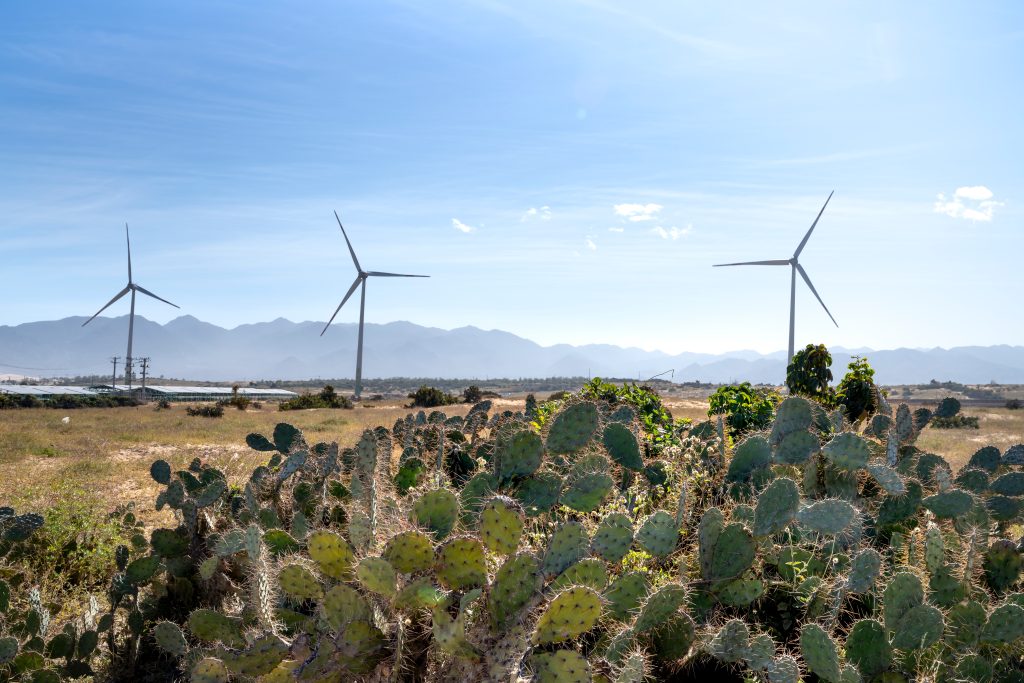
Meanwhile, the USA’s five conventional nuclear fission plants under construction are now many years behind schedule and billions of dollars over budget.
Vogtle, in the US State of Georgia is now running three years behind schedule — and over US$2 billion over budget. The revised price tag for its two reactors is now coming in at around $15 billion USD, and rising.
However, the International Energy Agency notes that the development and deployment of other renewable electricity technologies are projected to rise at record levels.
- In the United States, Renewable Energy is increasing by 42 percent from 2010 to 2020 (up 90% from 2000 to 2020).
- Renewables made up nearly 20% of utility-scale US electricity generation in 2020, with the bulk coming from hydropower (7.3%) and wind power (8.4%).
- Solar generation (including distributed), which made up 3.3 percent of total US generation in 2020, is the fastest-growing electricity source.
- Globally, renewables made up 29% of electricity generation in 2020, much of it from hydropower (16.8 percent).
- A record amount of over 256GW renewable power capacity was produced in 2020.
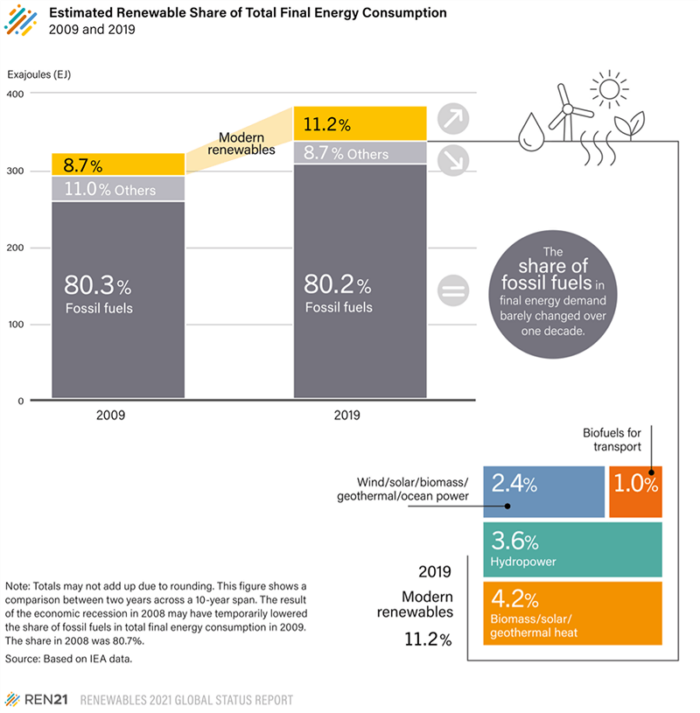
The trend is certainly showing a massive growth of renewable, non-nuclear, sources of power over the next decade. Still, will this be enough for the world to reach net zero by 2050?
Germany’s Nuclear Position
Germany has 20,000 Megawatts (MW) of installed nuclear energy. However, 90% of its production closed after Japan’s Fukushima disaster (27 reactors). The last three German fission reactors still in operation are slated to close on December 31st, 2022.
In 2020, about 50% of Germany’s electricity came from renewable sources: 27% wind, 10% solar, 9.3% biomass, 3.7% hydroelectricity. About a third was fossil fuels (24% coal, 12% natural gas), and 12% was nuclear.
The GDR’s Green Party holds both the economy and environment ministries. Therefore, Germany’s nuclear position tends to read like a long list of reasons why nuclear reactors should not stay open. Reopening old reactors is even less popular with voters.
However, while 75% of Germans were in favour of closing nuclear plants before Russia’s invasion of Ukraine, 70% now favour keeping them open. Consequently, the government is facing some difficult decisions.
Are There Safer Locations for Nuclear Power?
Some countries have a relatively stable geology, and are less prone to tsunamis like Japan. Australia, for example, sits in the middle of a tectonic plate, some distance from the nearest subduction zones.
In addition, tsunamis created by earthquakes along those trenches have hundreds, or thousands, of kilometres to travel before reaching Australian shores.
The International Experts’ Meeting (IEM) on nuclear emergencies has recommended safety margins which take the likelihood of natural hazards into account when assessing overall plant safety.
Nevertheless, given the sheer cost-advantage of wind, solar and hydro, new investment in nuclear will rely on major advances in the technology.
Is fusion the solution for net zero?
Net-zero by 2050 assumes emissions are constantly in decline from now until 2050.
As it is, cumulative emissions have the greatest impact on the total amount of CO2 in the atmosphere and, thus, the eventual level of warming.
So, even if fusion power were viable as early as 2030, it would still likely be too late to make much difference to the goal of net zero.
To achieve net-zero emissions by 2050, the electrification of industry and infrastructure needs to more than double according to the International Energy Agency (IEA). Major drivers will be the electrification of cars, home heating, and industry.
Powering sectors like ship transportation and steelmaking will also require huge amounts of electricity generation to produce fuels like hydrogen and ammonia. This is because these kinds of sectors are much harder to power by battery.

What, then, is the Future of Fusion?
The original version of the road map, published in 2012, forecast that a demonstration model of a fusion power plant (known as DEMO) could be operating in the early 2040s.

This represents a setback caused largely by delays in the ITER, the 20bn Euro fusion reactor built in the south of France.
In fact, Tony Donné, a nuclear physicist and EURO fusion’s program manager, suggests the schedule for DEMO could slip back even further.

ITER represents the culmination of 60 years of research. It is the world’s largest-ever tokamak. it will weigh 23,000 tonnes and is designed to generate 10 times the power that it consumes.
The project was to switch on in 2016 and cost around 5bn euros. However, its price has since roughly quadrupled, and its commencement pushed back to 2025. Full-scale experiments will not happen until at least 2035.
Consequently, the research required to achieve fusion power by 2050 will likely involve a great deal international cooperation. At the same time, commercialising the industry will create intense competition for expertise.
Conclusion
Nuclear fusion for energy production has enormous potential, but it is still many years away from realisation. Nuclear power, more generally, appears likely to play a part in the overall energy mix. Whether it remains competitive with the volume of power generated by non-nuclear solutions is debatable.
In the medium term at least, as we approach the critical goal of net-zero by 2050, the continued growth of cheaper alternatives like wind, solar and geothermal power, is vital.
Replacing fossil fuels is essential if we are to avoid the worst of the climate crisis. By leveraging the available scientific research in our value chains, we can achieve greater wealth, productivity, and a flourishing economy and society.
At THRIVE, we call this the state of ‘thrivability’. The Thrive Project is a not-for-profit, for-impact research, education and advocacy organisation. THRIVE shares the latest guidance on environmental and social issues such as climate change, pollution, biodiversity loss, and social inequality.
Want to keep up to date with the latest energy research? Contact The THRIVE Project for more information, and sign up to our newsletter for the latest updates.
